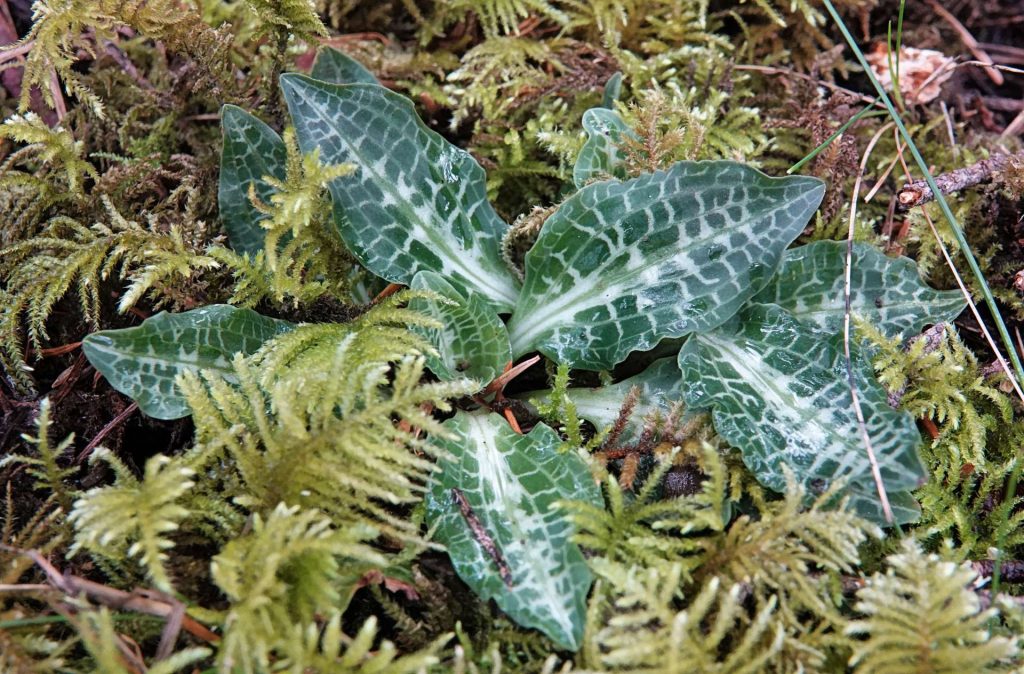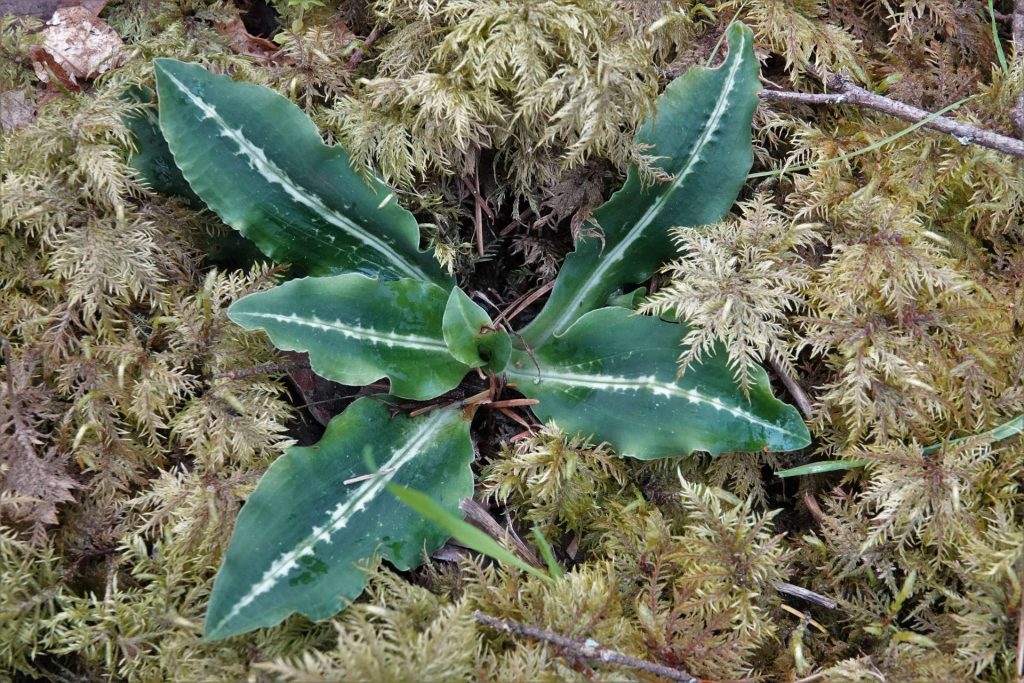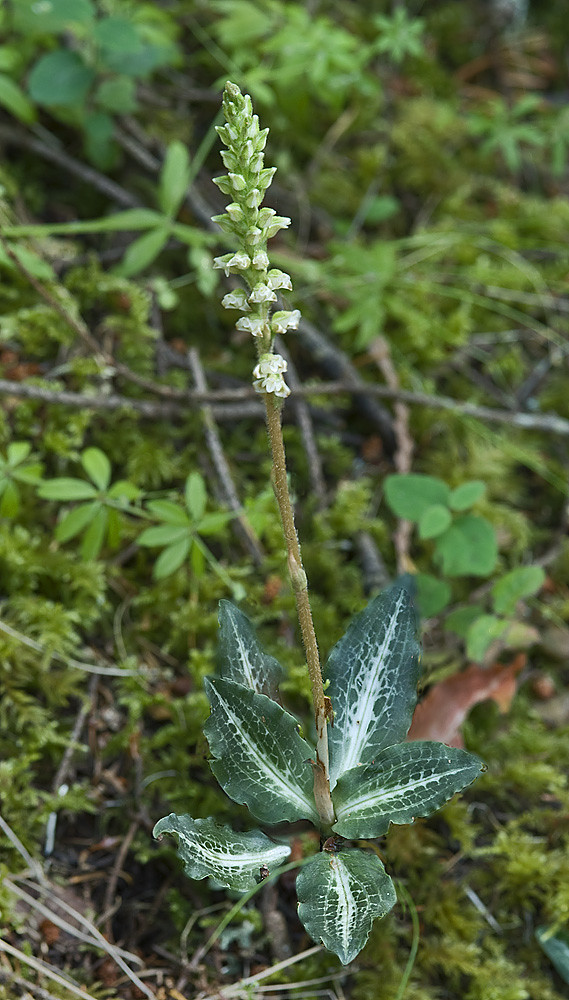Family: Orchidaceae
Common name: Rattlesnake plantain
E-flora BC: https://linnet.geog.ubc.ca/Atlas/Atlas.aspx?sciname=Goodyera%20oblongifolia
Wikipedia: https://en.wikipedia.org/wiki/Goodyera_oblongifolia
While walking along a forest trail and looking at mosses, you may have noticed unusually patterned rosettes of leaves, pressed flat into the mossy carpet. The leaf rosette can be quite small, less than 10 cm in diameter, or sometimes close to 20 cm if you’re running into a particularly vigorous specimen. They often occur in groups of several plants right next to each other – they spread through an underground stem (a rhizome), so the individuals plants in a small group growing close together is really a single plant.
Rattlesnake plantain is an evergreen orchid, the leaves are present all year round. In July, mature healthy specimens will produce a flower spike. The flowers are nothing like the showy ones that you find on house-plant orchids available at supermarkets and flower shops, instead, they are whitish, sometimes light-green, and barely the size of a pinky fingernail.


